Day 2 of a 3 day Late Winter/Early Spring tour. It was quite a lot less windy than yesterday, but having swung round to N/NW in the morning it was noticeably colder in the wind. Thankfully the skies cleared in the morning and we had quite a lot of sunshine during the day and although the sleet showers set in later in the afternoon, we managed to dodge one and we had finished by the time the next arrived.
With Lady Anne’s Drive open again today, we started the day at Holkham. We stopped to scan the grazing marshes first – there were lots of Wigeon out on the grass, plus a few Teal and Shoveler on the pools. Three Egyptian Geese were out on the grass too. A large flock of Pink-footed Geese flew round and dropped down beyond the bank towards Wells – most have already left to head north, so it was nice to see and hear a good number still here today.
There were a few waders out here too, one or two Curlew and Oystercatcher, several Redshanks. A Common Snipe flew over and then from the top of the Drive we counted six feeding around the muddy edges in one of the wet ditches. Two or three Marsh Harriers hung in the air, along with several Red Kites and we got the scope on one of the pale Common Buzzards which was perched on a bush in the distance. Three Spoonbills flew overhead, the first of many today.
It was sheltered to the south of the pines, but cold and windy once we got out onto the saltmarsh the other side. We walked briskly eastwards, stopping to scan occasionally. A few Meadow Pipits were feeding on the near edge of the saltmarsh and one or two Skylarks fluttered up singing. A small group of Shelducks out in the middles were starting to display and several Redshanks were well camouflaged in the vegetation.
We met someone coming back who told us that the Shorelarks were in the cordon, so we quickened our step. When we arrived, we could see one or two of them right down at the far end but they were very mobile and kept flying up and round as we started to walk further down. They eventually settled down on the north side of the cordon and we got the scope on them. With the sun behind us, we had a lovely view from here, as the light lit up their yellow faces.
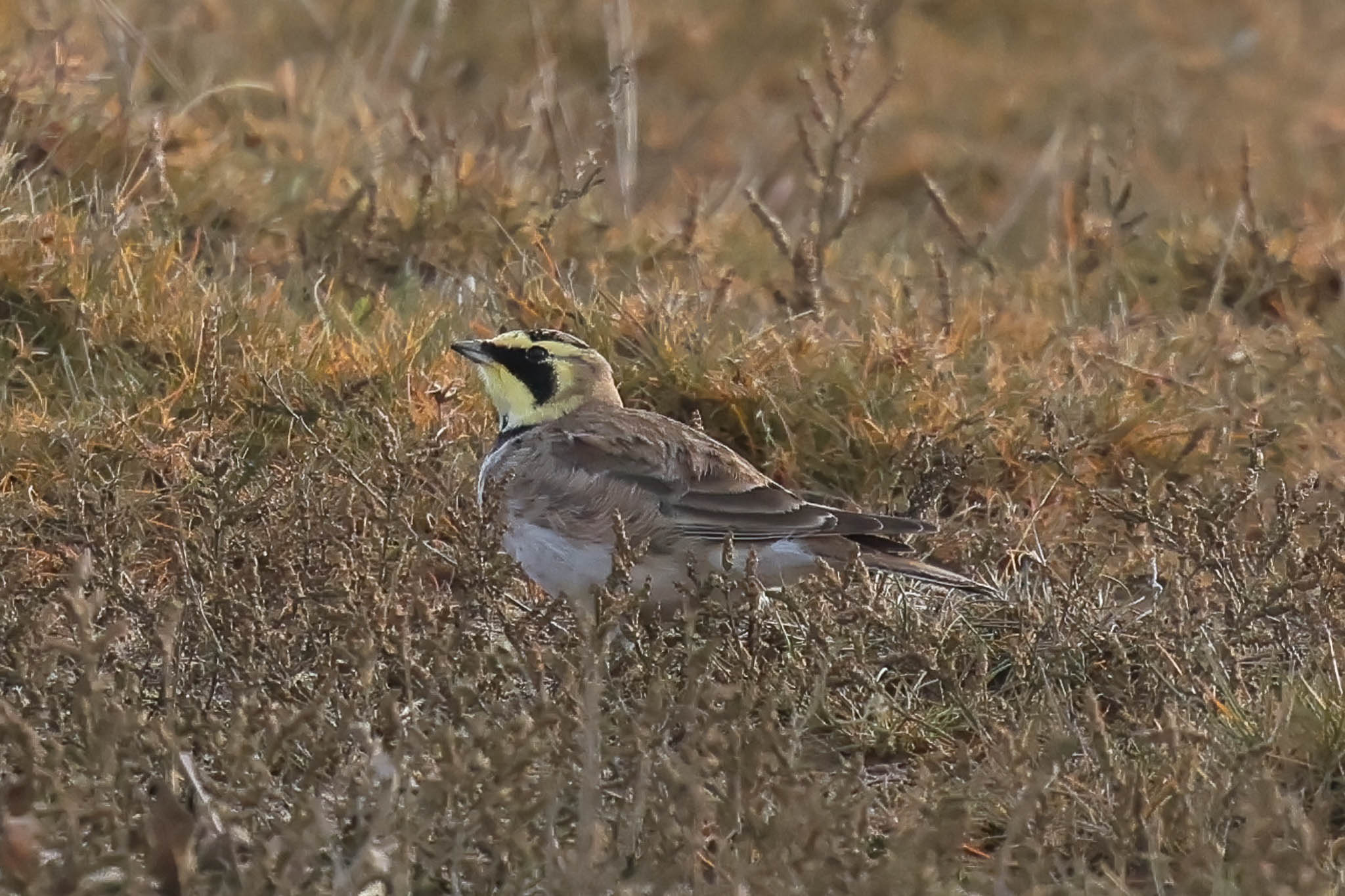
A Stonechat was feeding on the sheltered side of the dunes over the far side of the cordon too and a couple of Skylarks were picking around on the sand below. We could only count seven Shorelarks at first, but then saw one fly in and drop into the thicker vegetation in the middle. As they worked their way towards the corner, we walked down the path towards the beach and from here we could see there were now ten of them and we had some much closer views.
The sea was very rough and it looked no fun out on the beach today, so we decided to walk back. A Meadow Pipit was displaying along the edge of the path now, fluttering up and then parachuting back down, albeit a bit halfheartedly! Looking out towards the beach through the Gap, we could see lots of gulls gathered on the sand. The winds and rough sea would be washing lots of food onto the shoreline for them today.
Back at Lady Anne’s Drive, we stopped to scan the holm oaks while the group made use of the facilities in the Lookout. There were a couple of Goldcrests in the trees today but no sign of the Firecrest, and several Goldfinches. An adult Peregrine flew over the pines. There were a few more birds along the start of the path to the west, a pair of Chaffinches and a Dunnock around the puddles on the path, another couple of Goldcrests and a few tits in the trees. A Mistle Thrush flew up from the marshes into a pine tree behind us.
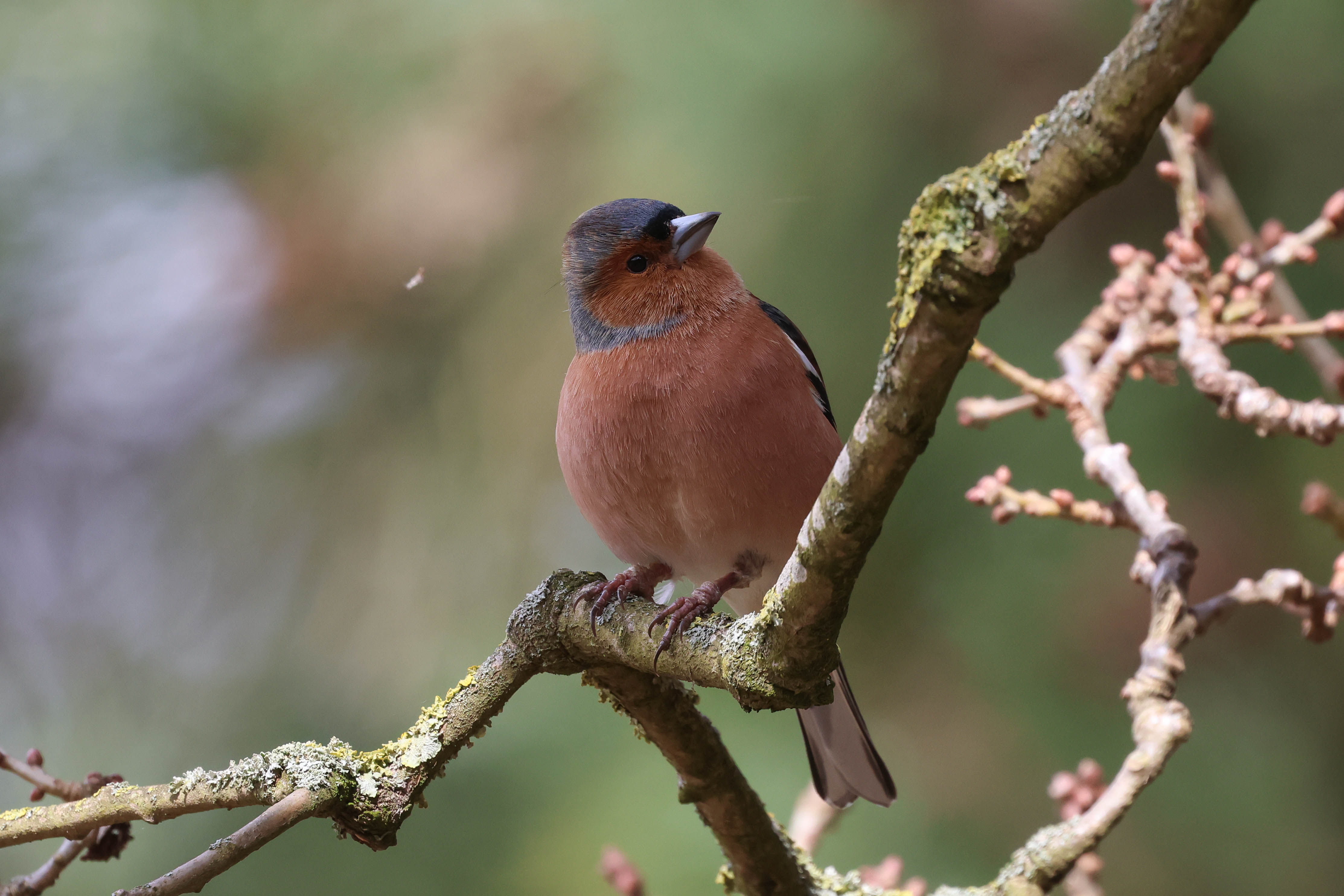
We set off to walk west. A little further on, we found more tits in the trees and a Treecreeper with them, which gave some nice views scaling the trunk of a large pine. At Salt’s Hole, there were a few Wigeon on the water at the back, some Shoveler asleep in the reeds and we got the scope on a Little Grebe. A Jay perched up briefly in the trees at the back.
Looking out from the gate before the boardwalk, we could see a small group of Pink-footed Geese feeding on the grazing meadow just behind the first ditch and had a good opportunity to compare and contrast with some nearby Greylags. A pair of Mistle Thrushes were out in the grass too and we could just see the head of a Raven very distantly on the top of the Monument in the Park beyond. A small group of Long-tailed Tits flitted through the trees behind us.

The boardwalk to Washington Hide is closed for repairs, so we continued on our way west. There were several Buff-tailed Bumblebees out now in the sunshine in the lee of the pines and it almost felt like spring in places! Just before the crosstracks, a Chiffchaff flicked up out of the bracken by the path and then we watched it in the sun in the edge of the trees.
Looking over the wall below the old Joe Jordan Hide, we could see at least ten Spoonbills on the pools, their long nuchal crests blowing round in the breeze. A Great White Egret flew in and landed in front of Decoy Wood too. A Curlew was down in the wet grass in the front. About a dozen White-fronted Geese walked down from the edge of the fort and into the pools and another two were feeding much closer to us, with the Greylags. Closer views than we had yesterday from the other side. Some of the group took off and flew round calling, disappearing off along the edge of the pines to the west.
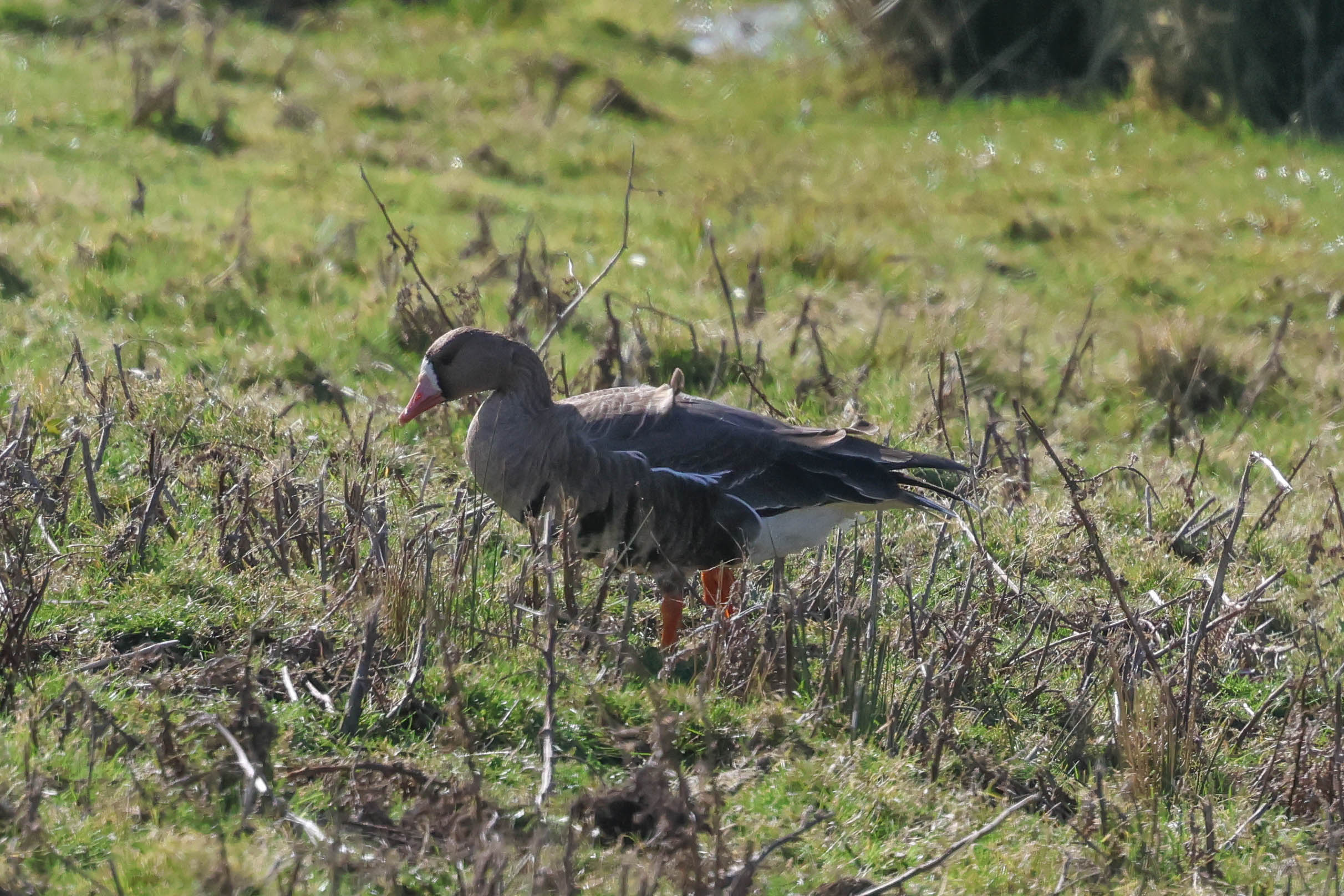
The walk back was less eventful, but we did come across a tit flock as we got back towards Lady Anne’s Drive. Four of the Long-tailed Tits were feeding on the path at first and then we watched another Treecreeper feeding on a low stump. It was time for lunch, and we were able to make good use today of the picnic tables outside the Lookout in the sunshine.
After lunch, we drove east. There were lots of Black-tailed Godwits on Stiffkey Flood again, so we had a quick scan from the road but still couldn’t see anything with them. We continued on to Cley and parked at Walsey Hills. There was a Little Grebe on Snipe’s Marsh, along with a couple of Gadwall and Shoveler as we passed.
It was windy up on the East Bank. There were lots of Wigeon out on the grazing marsh and a few Teal around the pools. A couple of Water Pipits flew over the bank calling and dropped down in the reeds out of view. We could see a Spoonbill feeding at the back, on Pope’s Pool, sweeping its bill from side to side in the shallow water, which then took off and flew towards us, landing again on a channel out in the middle. We could see the Spoonbill was making its way towards the Serpentine, much closer to the bank, so we hurried on and had great views of it when it flew again and landed on the water right next to the bank. Great views of it now, as it caught sticklebacks in the shallows.
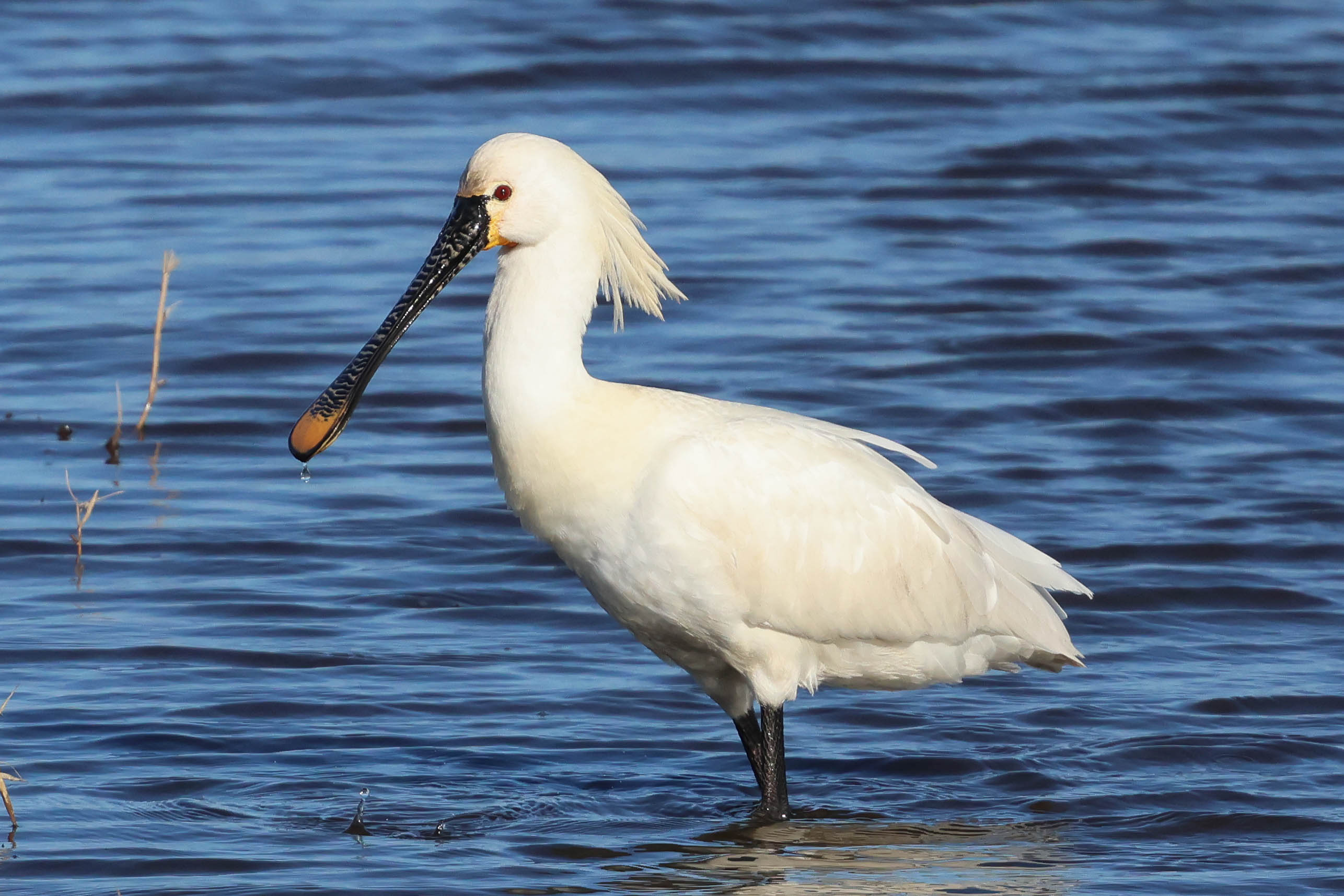

There was a small group of three Dunlin and two Ringed Plover on the short grass on the back of the Serpentine and a few Avocets feeding in the water. We walked on to the shelter overlooking Arnold’s and got out of the wind for a bit. A group of Dunlin were feeding on the saltmarsh in front of the hide along with a Curlew, and there were several Redshank further back, but nothing more unusual here today.
We decided to brave the wind and head on out to the beach. There were lots of gulls feeding in the surf – mostly Black-headed Gulls and Common Gulls, but a scattering of Herring Gulls and a Great Black-backed Gull flew past. Three Gannets flew past further out, catching the sun. We had seen someone walking east along the shingle from the shelter and from their body language we could see they hadn’t come across anything. Still, we decided to have a quick look in case they had missed something. We couldn’t find any of the Snow Buntings here now either – they had probably flown off up Blakeney Point earlier, as a flock was seen passing Coastguards this morning. There was a Great Crested Grebe out on the sea from here, beyond all the gulls.
We could see dark clouds away to the west, so we thought it would be prudent to make our way back. One of the Water Pipits was now feeding in the open area of cut reeds in the reedbed and we had a good view of it in the scope.
We received some information that someone had seen the Long-billed Dowitcher on the flood at Stiffkey again this afternoon, with the godwits, just where we had looked earlier, so we headed back to see if we could find it to finish the day. Driving west, we headed straight into the dark clouds and decided it would be prudent not to get out for a walk yet. We were glad we didn’t, as for about five minutes there was quite a heavy shower of snow/sleet. We drove past the flood and scanned from the minibus again, but the Dowitcher wasn’t with the godwits there again now.
Once the sleet stopped, we parked and got out. As we walked down the footpath towards the flood by the road we met one of the locals coming back the other way who told us that the Long-billed Dowitcher wasn’t there, but he had seen it earlier in a nearby field with another flock of Black-tailed Godwits. However, the birds were very prone to be flushed in that location and they had flown off when a Marsh Harrier went over so he wasn’t sure whether they would still be there. We decided to have a go anyway.
As we walked down the muddy path, we stopped to scan from behind the trees as instructed. There was a large flock of Black-tailed Godwits back there now, and sure enough there was the Long-billed Dowitcher with them. It was hard to see at first, the godwits kept spooking and flying round, but eventually they settled long enough for us to get the scope on the Dowitcher and everyone had a good look at it. Much smaller than the godwits, more like a large grey snipe, it stopped to preen for a while and then resumed feeding, with its distinctive sewing machine probing action.
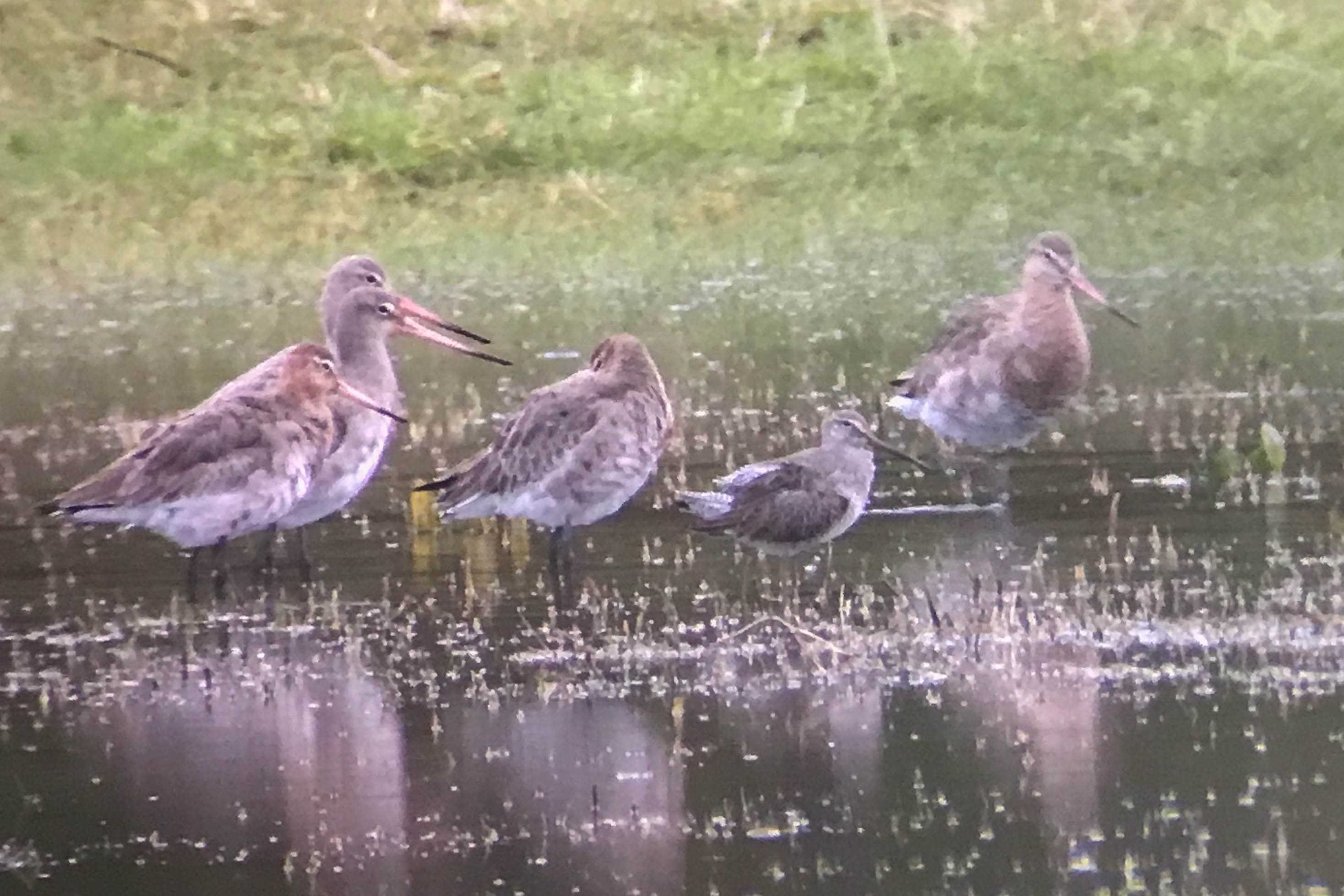
When we got back to the minibus, we could see more dark clouds approaching from the west. It was time to head back now anyway and as we drove inland we found ourselves in some more persistent sleet. A Barn Owl flew across the road in front of us and disappeared into a nearby barn, presumably having ventured out hunting earlier and now wanting to get out of the wet. Thankfully we had managed to get through the day and stay dry!
















